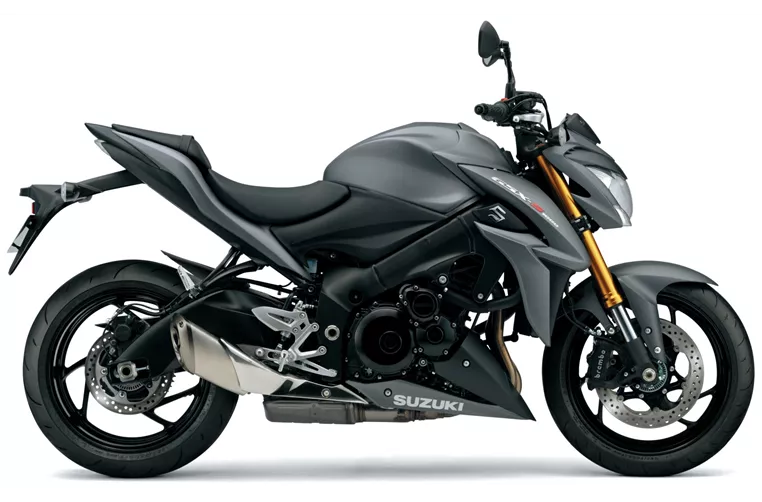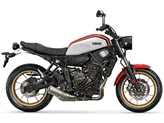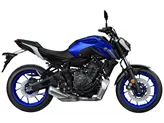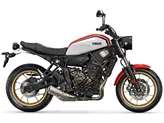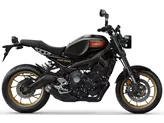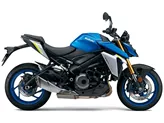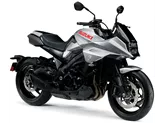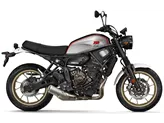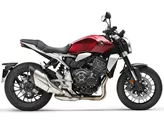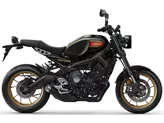Suzuki GSX-S1000 2016 vs. Yamaha XSR700 2016
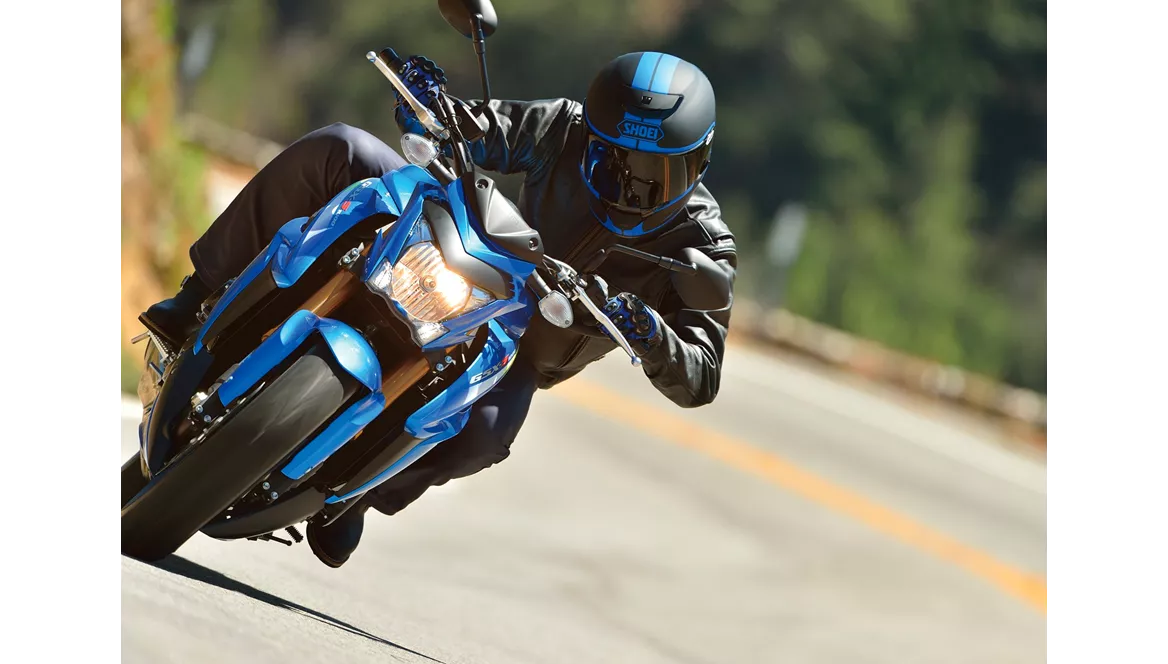
Suzuki GSX-S1000 2016

Yamaha XSR700 2016
Overview - Suzuki GSX-S1000 2016 vs Yamaha XSR700 2016
In terms of engine power, the Suzuki GSX-S1000 2016 clearly outperforms the Yamaha XSR700 2016 with 149 HP compared to 75 HP. This makes the Suzuki more suitable for riders looking for a more powerful and thrilling riding experience. Additionally, the Suzuki has a higher torque of 106 Nm compared to the Yamaha's 68 Nm, providing better acceleration and overall performance.
Both bikes are equipped with fuel injection systems, ensuring efficient fuel consumption and smooth throttle response. However, the Suzuki has a larger engine displacement of 999 ccm compared to the Yamaha's 689 ccm, which contributes to its higher power output.
In terms of suspension, the Suzuki features an upside-down telescopic fork at the front, providing better stability and control during cornering. The Yamaha, on the other hand, has a standard telescopic fork. Both bikes have a swing arm rear suspension with a monoshock absorber, ensuring a comfortable ride.
The chassis of the Suzuki GSX-S1000 2016 is made of aluminum, which is known for its lightweight and rigid properties, contributing to better handling and maneuverability. The Yamaha XSR700 2016, on the other hand, has a steel frame, which may result in a slightly heavier overall weight.
Both bikes are equipped with double disk brakes at the front, ensuring reliable and efficient stopping power. The Suzuki has larger brake disks with a diameter of 310 mm compared to the Yamaha's 282 mm. Both bikes have four-piston calipers, providing excellent braking control.

Suzuki GSX-S1000 2016
Both the Suzuki and the Yamaha are equipped with advanced rider assistance systems, including ABS, ensuring safe and controlled braking in various road conditions.
In terms of dimensions and weights, both bikes have similar front tire widths of 120 mm and rear tire diameters of 17 inches. However, the Suzuki has a wider rear tire width of 190 mm compared to the Yamaha's 180 mm. The Suzuki also has a longer wheelbase of 1460 mm compared to the Yamaha's 1405 mm. Both bikes have a seat height of 815 mm, providing a comfortable riding position for most riders.
The Suzuki GSX-S1000 2016 has a slightly higher kerb weight of 209 kg compared to the Yamaha's 186 kg. However, considering the Suzuki's more powerful engine, this weight difference is expected.
In terms of fuel tank capacity, the Suzuki has a larger capacity of 17 liters compared to the Yamaha's 14 liters, providing a longer range between refueling.

Yamaha XSR700 2016
In terms of strengths, the Suzuki GSX-S1000 2016 offers a powerful engine, good braking control, a stable and sensitive chassis, a comfortable seating position, and a relatively low price compared to other bikes in its class.
On the other hand, the Yamaha XSR700 2016 has strengths such as an elastic motor, direct transmission, easy handling, and good build quality.
However, the Suzuki GSX-S1000 2016 has some weaknesses, including a front end that may appear too aggressive for some riders and a throttle response that can be too sensitive in the lower rev range.
The Yamaha XSR700 2016, on the other hand, has a slightly softer chassis and a seating position that may require some getting used to.
Overall, both the Suzuki GSX-S1000 2016 and the Yamaha XSR700 2016 have their own strengths and weaknesses, and the choice between them ultimately depends on the rider's preferences and priorities.
Technical Specifications Suzuki GSX-S1000 2016 compared to Yamaha XSR700 2016
Pros and Cons in comparison
Pros and Cons in comparison
Suzuki GSX-S1000 2016
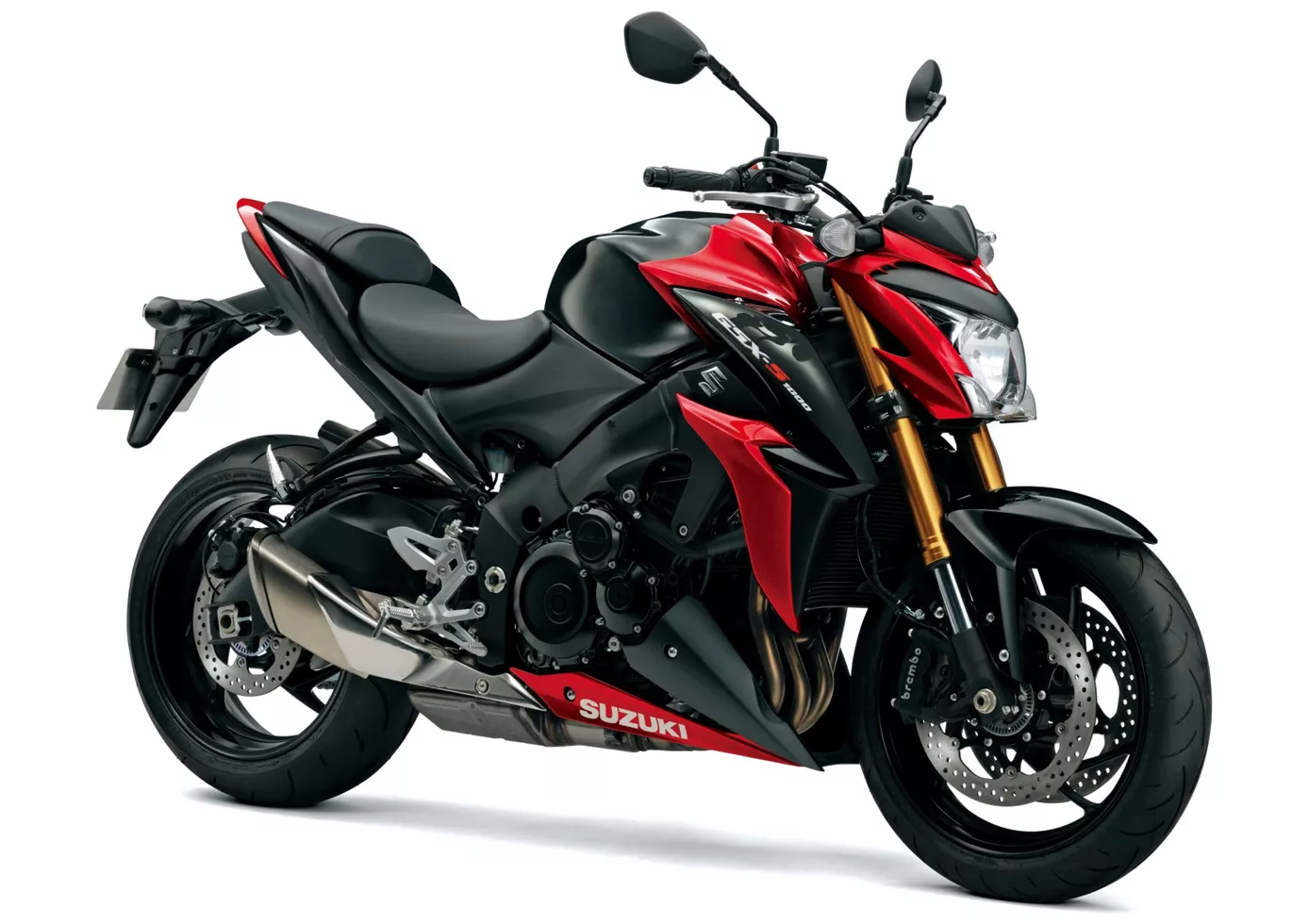
Some might be surprised that after waiting so long, Suzuki did not launch the ultimate, uncompromising power naked bike. Instead, the Suzuki GSX-S 1000 with its 149 hp seems almost too well-behaved. But once you ride it on the race track, you quickly realise that the engine is far more powerful in real life and that the rest of the performance of the chassis and braking system is also impressive. In return, it also offers a large portion of everyday and practical suitability - not bad ingredients when you have to cover everything from everyday to race track with a single bike.
Yamaha XSR700 2016

If you want an entry-level motorbike that will keep you happy for a long time, but at the same time has a cool retro look, there's really no getting around the Yamaha XSR 700. With the MT-07 as the technical basis, you're buying what is probably the most popular beginner's motorbike at the moment - just in a different guise. The XSR 700's greatest triumph is its unbelievably elastic in-line two-cylinder, which neither overtaxes beginners nor bores experienced motorcyclists. The throttle response is pleasantly direct and the power develops very harmoniously, there will never be an 'oops' moment here. However, the XSR 700 should be seen as a relaxed cruiser rather than a sporty motorbike. The chassis sways very easily when ridden fast and brings uncertainty into the vehicle. Experienced riders will find it easy to cope with, but a beginner may be overwhelmed.
Price Comparison Avarage Market Price Suzuki GSX-S1000 vs Yamaha XSR700
There are a few key differences between a Suzuki GSX-S1000 2016 and a Yamaha XSR700 2016. In terms of price, the actual average price of a Suzuki GSX-S1000 2016 is about 25% higher. A Suzuki GSX-S1000 2016 experiences a loss of 90 GBP in one year of ownership. This is offset by a loss of 100 GBP for a Yamaha XSR700 2016. Compared to Yamaha XSR700 2016 there are more Suzuki GSX-S1000 2016 bikes available on the 1000PS.de Marketplace, specifically 10 compared to 9. It takes less time to sell a Yamaha XSR700 with 85 days compared to 109 days for the Suzuki GSX-S1000. Since model year 2015 1000PS.de editors have written 36 reviews for the Suzuki GSX-S1000 and 26 reviews for the Yamaha XSR700 since model year 2015. The first review for the Suzuki GSX-S1000 was published on 27/09/2014 and now has more than 17,100 views. This compares to more than 13,700 views for the first review on Yamaha XSR700 published on 22/07/2015.
